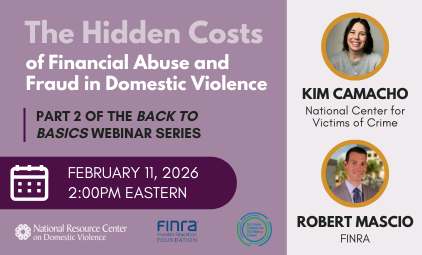This report highlights findings from the National Intimate Partner and Sexual Violence Survey (NISVS) specific to sexual identity. This report fills gaps in research about the lifetime experiences of sexual violence, stalking, and intimate partner violence experienced by U.S. women and men separately by sexual identity. This report focuses on the recent findings from NISVS of lesbian, gay, bisexual, and straight/heterosexual individuals' lifetime violence victimization experiences.
Key findings:
While women and men of all sexual identities experienced sexual violence in their lifetimes, women reported experiencing a substantial sexual violence burden, especially bisexual women.
- 4 in 5 (almost 80%) bisexual women and over 56% of bisexual men reported experiencing contact sexual violence in their lifetimes.
- 3 in 5 (almost 60%) of both lesbian women and gay men reported experiencing contact sexual violence.
- Over 53% of heterosexual women and over 29% of heterosexual men reported experiencing contact sexual violence.
- More than 1 in 4 lesbian women and almost 2 in 4 bisexual women reported to researchers they experienced rape during their lifetimes.
- About a quarter of gay men and 3% of heterosexual men reported to researchers they experienced rape during their lifetimes.
- One in 4 gay men and 1 in 5 bisexual men were made to penetrate someone else during their lifetimes.
Systems of oppression contribute to higher rates of sexual violence. These systems include racism, sexism, and heterosexism, among others. For those impacted by one or more of these oppressions, the risk of sexual violence increases. Over half of non-Hispanic white lesbian women (58.6%) experienced contact sexual violence in their lifetime.
- 1 in 4 non-Hispanic white lesbian women reported to researchers they experienced rape.
- Half of all Hispanic gay men (49.5%) and 61.2% non-Hispanic white gay men experienced contact sexual violence
- Over 27% of Hispanic, almost 34% of non-Hispanic Black, and over 29% non-Hispanic white heterosexual men experienced contact sexual violence
- About half of all Hispanic bisexual women reported to researchers they experienced rape.
- Over half of non-Hispanic bisexual women reported to researchers they experienced rape.
- Over 26% of non-Hispanic white gay men reported to researchers they experienced rape in their lifetime.
Victims generally know those who harm them.
- Most women and men across all sexual identities who experienced contact sexual violence reported that the person who harmed them was someone they knew.
- Over one-third (36.7%) of bisexual women reported experiencing contact sexual violence by a stranger.
- Almost 45% of victims who were gay men reported being raped by an acquaintance, including over 30% by a former or current intimate partner.
Sex of Perpetrator: (Contact Sexual Violence)
- Over 72% of lesbian victims reported only having male perpetrators; 1 in 5 (20%) had both male and female perpetrators.
- Over 74% of bisexual women victims reported only having male perpetrators; 1 in 6 (16.7%) had both male and female perpetrators.
- Over 89% of heterosexual women victims had only male perpetrators and .5% had only female perpetrators.
- 75.3% of gay men reported only having male perpetrators 1 in 6 had both male and female perpetrators.
- 1 in 3 bisexual male victims reported only having male perpetrators.
- 1 in 5 heterosexual male victims reported only male perpetrators, 1 in 2 had only female perpetrators, and about 1 in 6 had both male and female perpetrators.
Young people are targeted by those who sexually offend.
More than half of all female victims and one-third of all male victims of contact sexual violence first experienced victimization before the age of 18, regardless of sexual identity. Lesbian, gay, and bisexual youth might experience violence at even younger ages. Nearly 1 in 3 lesbian and bisexual female victims and 1 in 6 gay men reported experiencing their first contact sexual violence at the age of 10 or younger.
Creating safe, supportive, and inclusive environments for everyone is key to preventing sexual violence. Preventing sexual violence means we all must address deep-rooted abuses of power that contribute to inequities in health, safety, and well-being. A health equity approach to preventing sexual violence means that we need to both understand and address the factors that contribute to violence and safety and factors that expose some communities — especially communities that have been historically oppressed — to higher rates of sexual violence. By leading with health equity, we can work together to build collective power and create the kind of equitable, respectful communities we want to live in.














